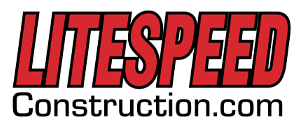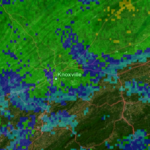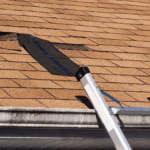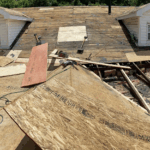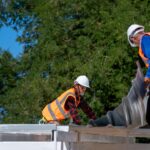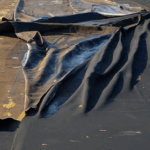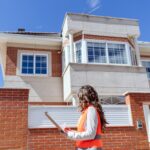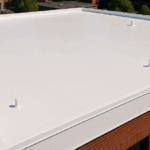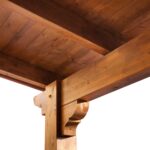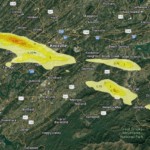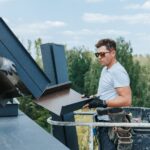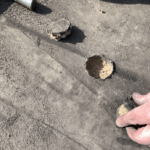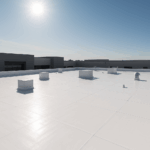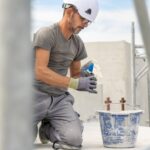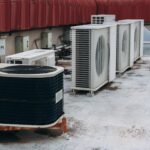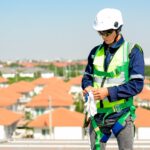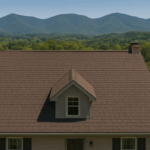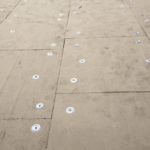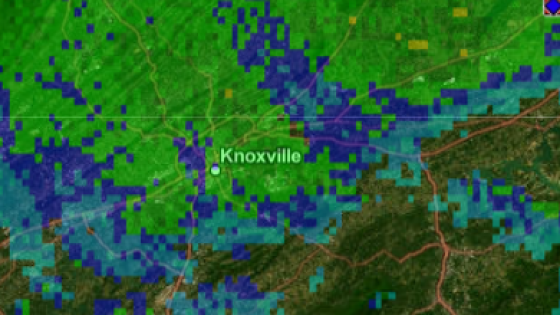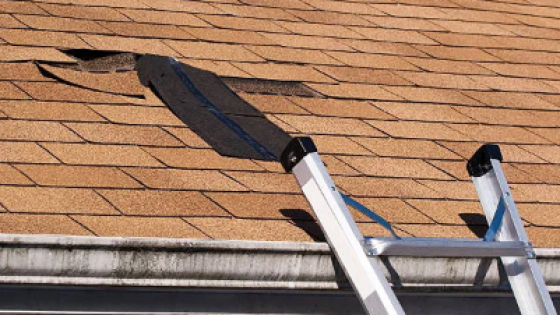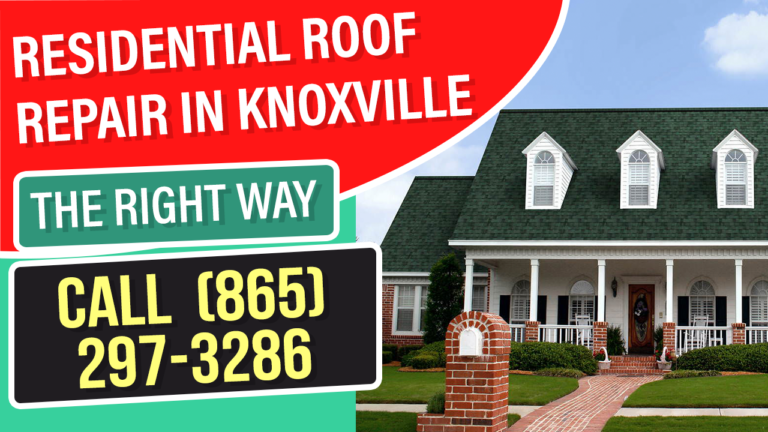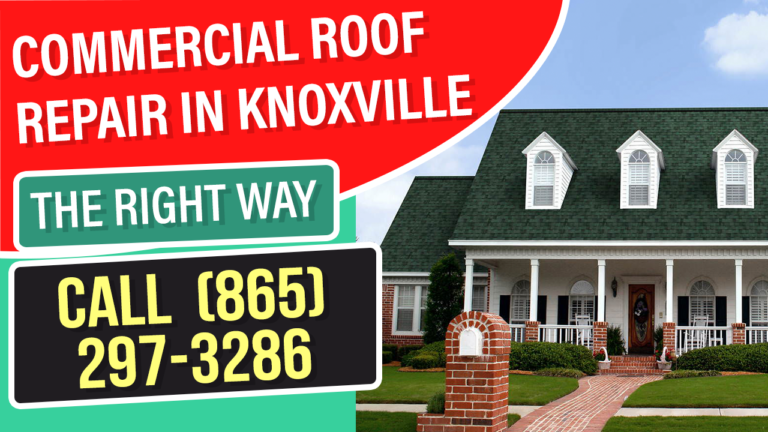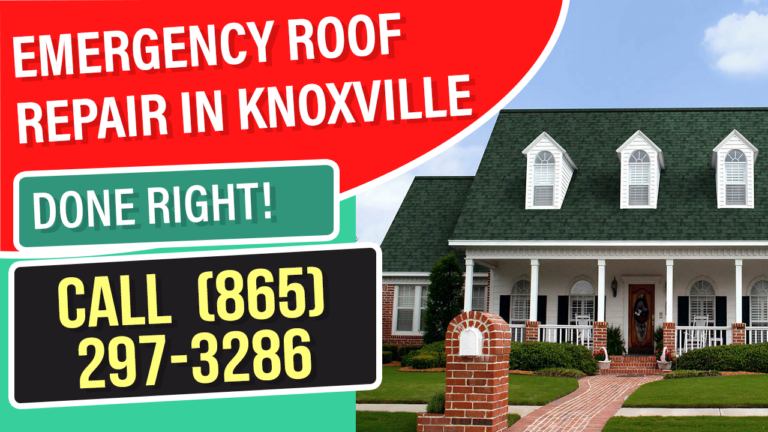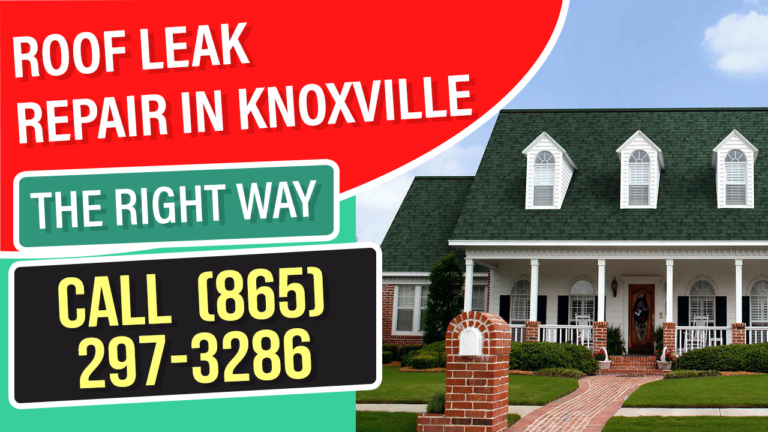Commercial roofs are designed to protect a building’s structure and contents, but one of their most crucial functions is directing water away safely and efficiently. Poor drainage can lead to roof leaks, structural damage, mold growth, and costly repairs.
As a leading roofing company in Knoxville, TN, Litespeed Construction specializes in identifying drainage problems before they escalate. In this guide, we’ll teach you how to Inspect Commercial Roof Drainage systems thoroughly, backed by OSHA safety guidelines, EPA stormwater regulations, and FEMA flood prevention insights.
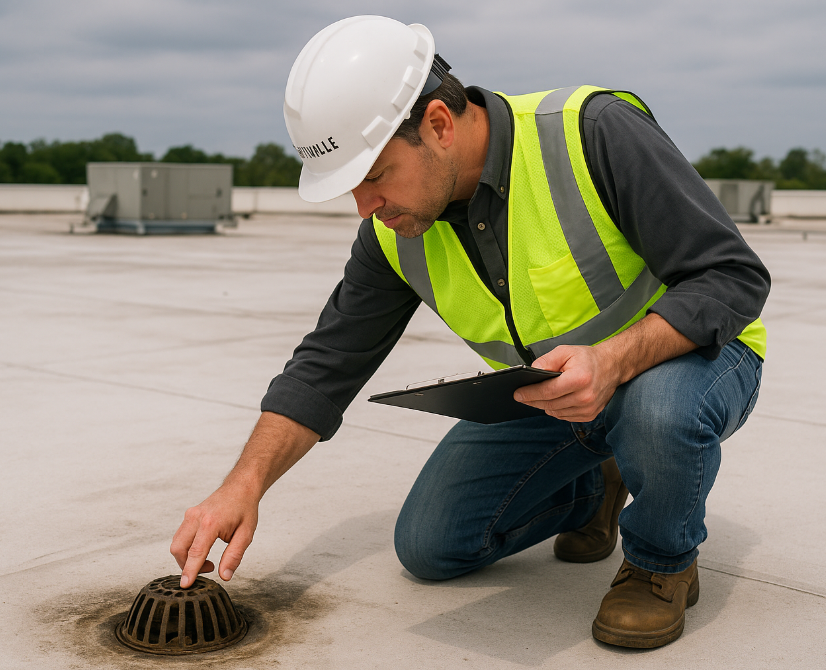
Key Takeaways
💡Routine Inspections Save Thousands
💡Compliance is Critical
💡Seasonal Checks Are Essential
💡Professional Assessments Boost Lifespan
Why Inspect Commercial Roof Drainage Matters
According to the Federal Emergency Management Agency (FEMA), water intrusion is the leading cause of non-weather-related building damage in the U.S. In commercial properties, 90% of flat roof failures are linked to poor drainage (FEMA, 2022).
The EPA also notes that improper drainage contributes to stormwater runoff contamination, which can violate the Clean Water Act and result in fines of up to $37,500 per day.
By making Commercial Roof Drainage Inspections a regular part of your maintenance plan, you’re not just preserving the building—you’re protecting your investment, your tenants, and your compliance record.
Step-by-Step: How to Inspect Commercial Roof Drainage
1. Safety First (OSHA Guidelines)
Before setting foot on a commercial roof, OSHA 29 CFR 1926.501 requires proper fall protection, including harnesses and guardrails. Always:
- Use a stable access ladder with a 3-foot extension above the roof edge.
- Wear slip-resistant boots.
- Never work alone.
2. Visual Inspection of Roof Surface
Look for signs of:
- Standing Water / Ponding – Anything deeper than ½ inch after 48 hours indicates poor slope or clogged drains.
- Membrane Damage – Tears, blisters, or punctures can let water penetrate beneath the surface.
Tip: Use a digital level to check slope; NRCA recommends a minimum slope of ¼ inch per foot.
3. Check Primary Drains
Most commercial roofs have internal drains. When inspecting:
- Remove debris like leaves, dirt, and trash.
- Ensure drain domes and strainers are intact.
- Flush with water to confirm flow.
EPA stormwater management standards require drains to be free of obstructions to prevent overflow into storm systems.
4. Inspect Secondary (Emergency) Drains & Scuppers
- Check that overflow drains are clear and at the correct height relative to primary drains.
- Ensure scupper openings are free from rust, corrosion, or sealant failure.
5. Gutter & Downspout Inspection
If your commercial building uses exterior gutters:
- Inspect seams for separation.
- Verify downspouts discharge at least 5 feet from the building per HUD recommendations.
6. Document & Record Findings
Keep written logs with photos. OSHA suggests documenting every inspection to show compliance during audits.
Common Problems Found During a Drainage Inspection
| Issue | Cause | Potential Damage | Prevention |
|---|---|---|---|
| Standing water | Poor slope or clogged drains | Membrane degradation, leaks | Regular cleaning & slope adjustments |
| Blocked scuppers | Debris accumulation | Overflow, façade staining | Quarterly inspections |
| Damaged drain domes | Weather, vandalism | Faster debris blockage | Install heavy-duty replacements |
| Loose gutter joints | Expansion/contraction, age | Water infiltration at walls | Annual re-sealing |
| Cracked sealant at scuppers | UV damage | Wall leaks | UV-resistant sealant |
Web Ratings for Commercial Roof Drainage Inspection Importance
| Source | Rating (Importance) | Notes |
|---|---|---|
| FEMA | 9/10 | Prevents flood-related damage to structures |
| OSHA | 10/10 | Essential for workplace safety compliance |
| NRCA (Roofing Association) | 9/10 | Extends roof lifespan by 50% when maintained |
| EPA | 8/10 | Reduces environmental pollution risks |
FAQs – Inspect Commercial Roof Drainage
At least twice a year—once before rainy season and once after winter. Additional checks after storms are recommended.
Ladder, gloves, debris removal tools, flashlight, camera, and water hose.
Yes—many warranties require proof of maintenance and proper drainage.
Local building codes, OSHA safety rules, and EPA stormwater guidelines.
Clogged drains combined with insufficient slope.
For safety and compliance, professionals are recommended.
Typically 1–3 hours, depending on roof size and complexity.
$250–$600 depending on building size.
EPA fines up to $37,500 per day for non-compliance.
Regular drainage inspections, cleaning, and preventive repairs.
